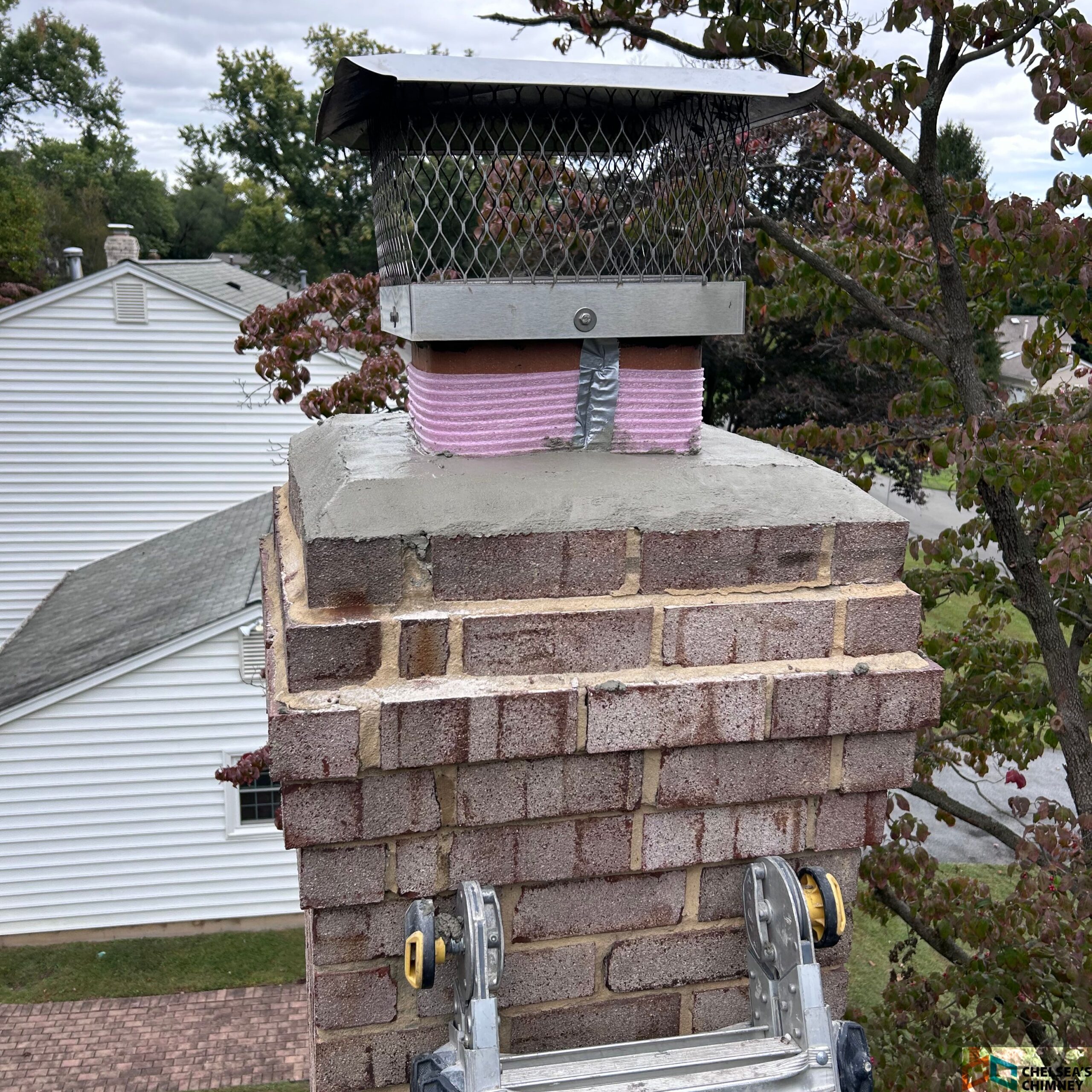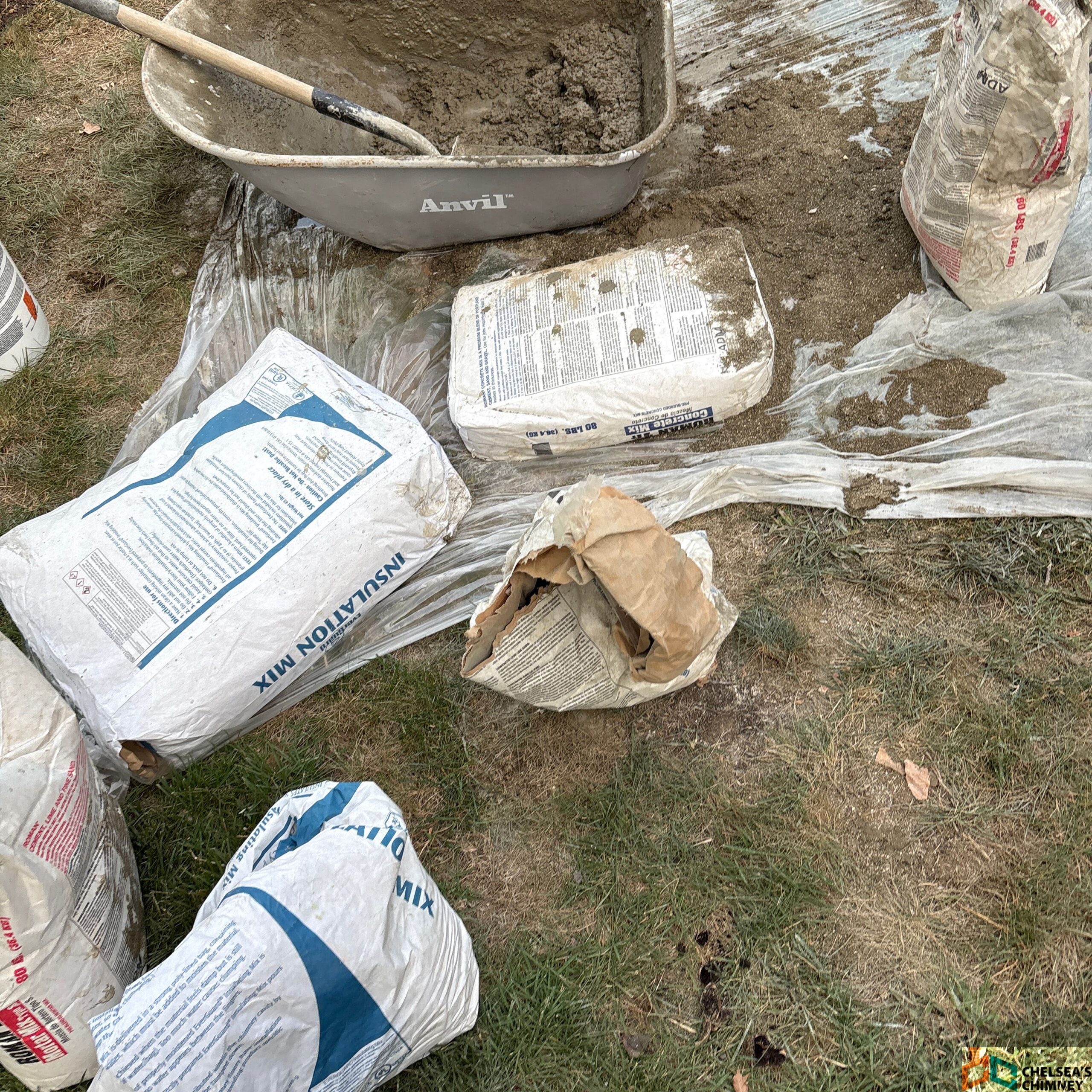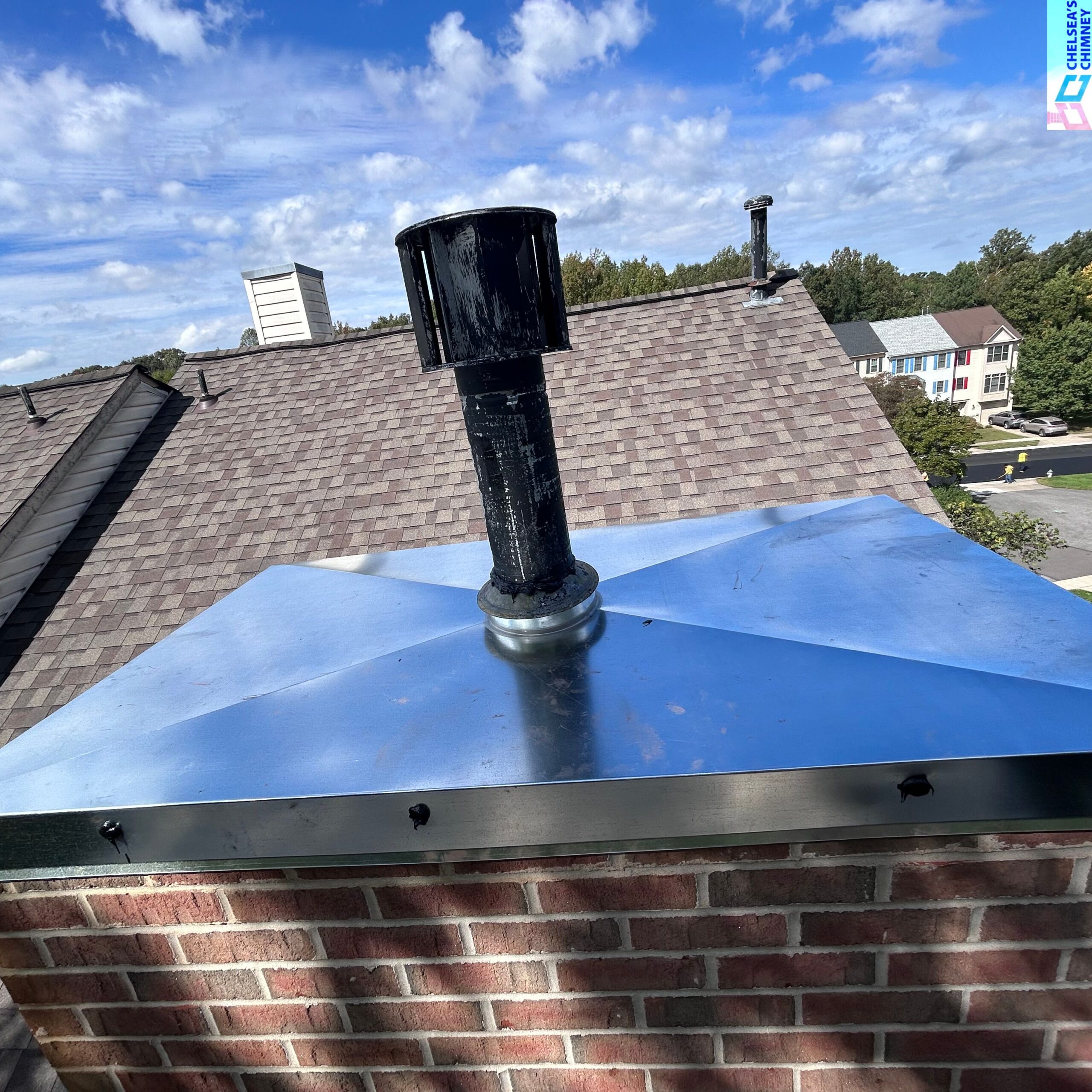A bad chimney liner in Taneytown, MD, can exhibit several signs of deterioration or damage. Here’s what you should look for:
1. Cracks and Gaps
- Visible Cracks: One of the most common signs of a bad chimney liner is visible cracks or gaps in the liner material. These cracks can allow dangerous gases like carbon monoxide to leak into your home, posing serious health risks.
- Gaps in Mortar: In clay tile liners, the mortar between the tiles can erode or crack, creating gaps that compromise the liner’s integrity.
2. Flaking or Spalling
- Flaking Bricks or Tiles: Spalling occurs when moisture enters the chimney liner and causes the surface of the bricks or tiles to flake or peel away. This is common in older chimneys with clay tile liners and indicates significant moisture damage.
- Disintegrating Tiles: If pieces of the clay tile liner are found in the fireplace or at the bottom of the chimney, it’s a clear sign that the liner is deteriorating.
3. Rust and Corrosion
- Rusty Metal Liners: For metal liners, especially those made of stainless steel or aluminum, rust or corrosion is a major concern. If the liner shows signs of rust, it may no longer provide adequate protection, and replacement could be necessary.
- Discoloration: Discoloration or staining on the liner, particularly on metal liners, can also indicate corrosion or exposure to moisture.
4. Buildup of Creosote
- Thick Creosote Deposits: If there is an excessive buildup of creosote—a black, tar-like substance—it can indicate that the liner is not functioning properly. Creosote is highly flammable and increases the risk of a chimney fire.
5. Draft Issues
- Poor Ventilation: A bad liner can lead to poor ventilation, causing smoke to back up into the home. If you notice smoke entering your living space when the fireplace is in use, it could be a sign that the liner is damaged or blocked.
6. Water Stains
- Water Damage: Water stains on the interior walls near the chimney or inside the fireplace can indicate that the liner is compromised and allowing moisture to penetrate the chimney structure.
7. Efflorescence
- White Residue: Efflorescence, or a white powdery residue on the exterior of the chimney, indicates that water is passing through the masonry, which can be a sign of liner failure.
Conclusion:
If you observe any of these signs, it’s crucial to have your chimney inspected by a professional. A bad liner can compromise the safety of your home, leading to fire hazards, gas leaks, and structural damage. Regular inspections and maintenance are key to ensuring your chimney liner remains in good condition.
For professional chimney inspection and relining services in Taneytown, MD, contact Chelsea’s Chimney today! We can assess the condition of your liner and recommend the best course of action to keep your home safe.





